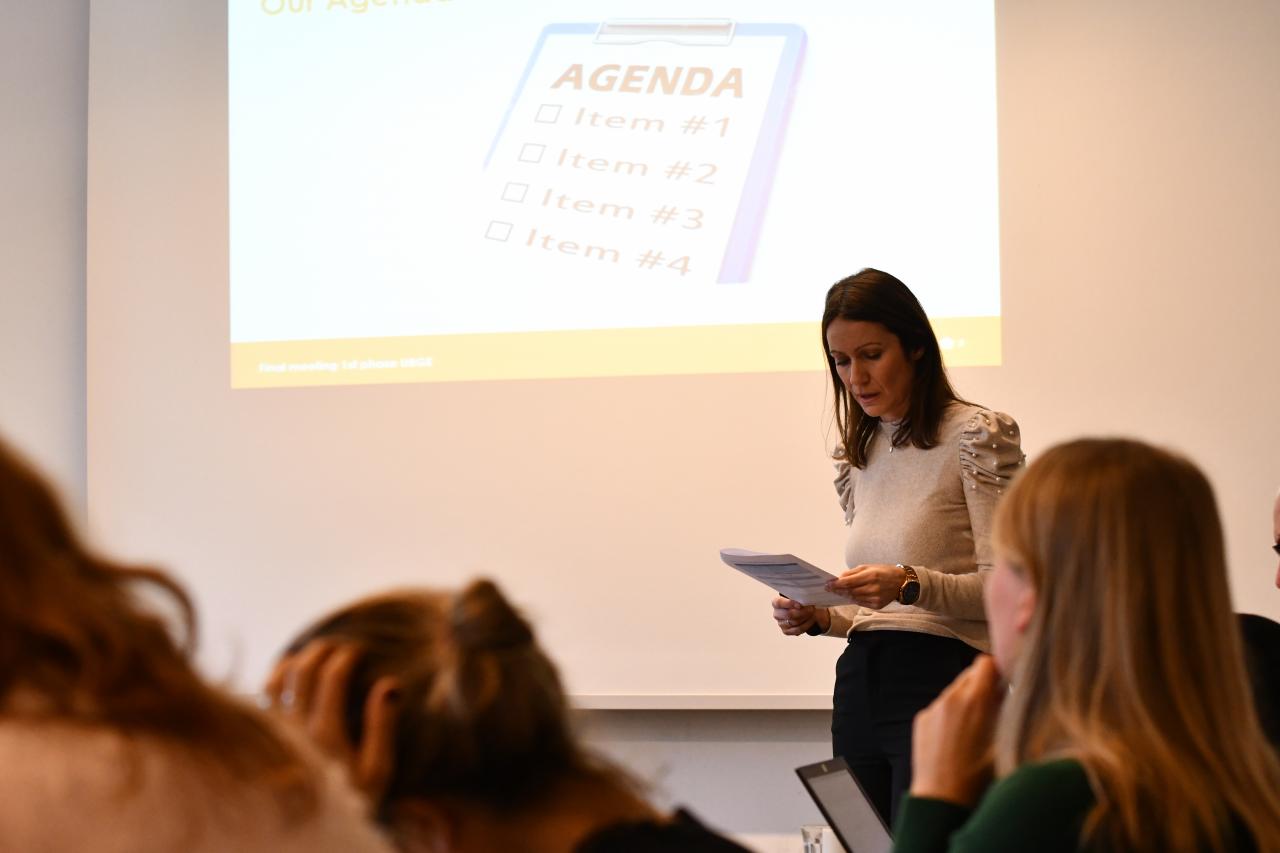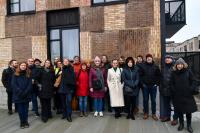
Eleni Feleki is expert in facilitating urban transitions. She supports cities to fulfil their ambitions towards urban sustainability. She works as lead expert for the URGE project. After one year URGE, she looks back and forward.
Please tell us what is special about URGE.
URGE is the abbreviation for circUlaR buildinG citiEs. The project’s focus is on the building sector. This is perfectly in line with the EU Green Deal and that is making URGE so special. Briefly, the built environment has a significant impact on many sectors of the economy, on local jobs and quality of life. Did you know the construction sector is responsible for over 35% of the EU’s total waste generation?
I wasn’t aware of that. And URGE wants to diminish this amount of waste?
URGE is a strong partnership of nine European cities reflecting different socio-economic conditions and facing different challenges. The cities that participate are Utrecht, Copenhagen, Riga, Munich, Maribor, Prato, Granada, Kavala and also an interregional public authority established in Caldas da Rheina in Portugal.
What attracted you in the URGE project to support the cities’ processes as Lead Expert?
Two things: first the partnership and the challenge to keep the balance between frontrunners and less experienced cities. And second, the topic being in line with the EU Green Deal.
One year has passed by since the start of URGE. What progress has been made so far?
The most important achievement is the deep commitment of nine European cities towards circular building. The cities maintain strong relations with each other, this is very important for the upcoming years. Furthermore, after one year we deeply understand the challenges each city is facing in terms of circular economy practices adaptation in the building sector and the engagement of stakeholders.

How would you describe the status quo regarding circular economy in the URGE partner cities?
The level of experience of each city differs. This is not a drawback, but an opportunity, as it facilitates the knowledge exchange and raises the level of interaction. The common aspect is the need to find, transport and reuse materials in the building sector and draw political commitment towards this goal.
Can you tell more about the different levels of experience?
Sure! Utrecht, Copenhagen and Munich deal with growing urbanization and are already implementing projects in a smaller or larger scale. These cities are the front runners of the project. Maribor is in a transformation period, as it implements a lot of circular European projects and is also designing a circular building. Prato has a lot to share in terms of pilot projects as the city has also planned a demolition of an old hospital. Riga is very strong in strategic planning and has another aspect to bring on board: the circular reuse of old buildings. Granada and Kavala are very eager to learn from the other partners and implement good practices at local level.
What is on the agenda for the upcoming two years?
URGE is structured around four themes. The first theme is human resources. That’s about networking, stakeholders' engagement and alignment to achieve common goals. The second theme is methods and infrastructure, thus standardization, legislation, collection and management systems, mapping of flows. Furthermore we have got governance: that’s about concrete economy strategies and integrated policies, design of a roadmap for market transformation and political recommendations out of the lessons learnt. The last theme is materials and resources like wood, soil, building stock and handling of materials after demolition
And what will be the most exciting thing for you to come?
To follow the implementation of concrete circular projects. For example, the city of Munich will practice the circular economy in a small area (Bayernkaserne). Meaning that 1,2 million tons of wastes will be produced and 50% of it will be re-used on the site. In Utrecht, new buildings are targeted in the area Merwedekanaalzone (67 ha) for circular aims. Following the implementation of these projects and bringing these experiences in the whole partnership, will create great inspiration.
How can other cities in Europe take lesson of what is happening in URGE?
All cities are active in social media and professional networks and communicate events through Facebook, Twitter and LinkedIN. So stay tuned! The best is yet to come.
